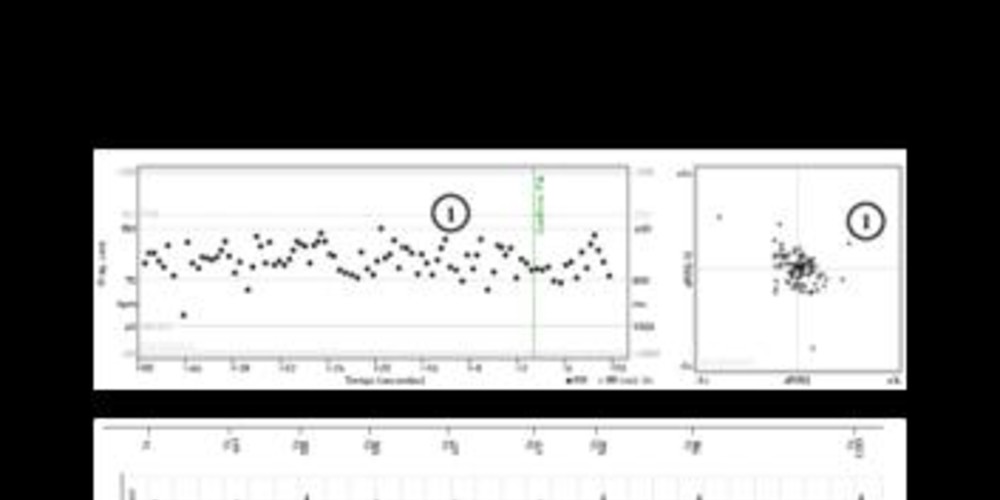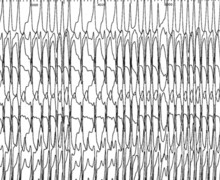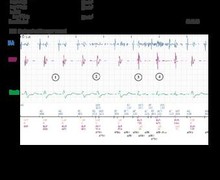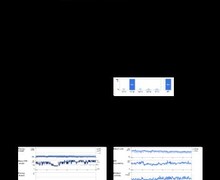Lipothymia and atrial disease
Tracing
Manufacturer Biotronik
Device ILR
Field Biomonitor
N° 5
Patient
81-year-old woman participating in the LBBB-TAVI study; paroxysmal AF; in the aftermath of implantation, palpitations, episodes of lipothymia and a syncopal episode.

Graph and trace
Tracing 5a: diagnosed AF episode;
- the tachogram and Lorenz plot strongly suggest an AF episode with highly irregular and relatively rapid ventricular intervals;
- the pattern confirms the presence of conducted AF with a relatively rapid rate and irregular ventricular intervals;
- diagnosis of AF by the device;
Tracing 5b: episode diagnosed as asystole;
- on the plot and on the tracing, the pattern is initially suggestive of a conducted AF;
- ventricular pause of more than 3 seconds leading to the diagnosis of asystole by the device;
- resumption of a stable sinus rhythm; it was therefore a post-conversion pause;
Tracing 5c: episode diagnosed as bradycardia;
- the tachogram, the Lorenz plot and the tracing are suggestive of a nocturnal sinus bradycardia; 10 seconds with a rate under 40 beats per minute leading to the diagnosis of bradycardia;
Tracing 5d: episode diagnosed as asystole;
- stable sinus rhythm;
- sinus pause leading to the diagnosis of asystole;
- return to a stable sinus rhythm.
Other articles that may be of interest to you







Bradycardia-tachycardia syndrome is characterized by alternating episodes of supraventricular tachycardia (atrial tachycardia, AF, common flutter) and episodes of bradycardia in conjunction with a sinus dysfunction. Symptomatology combines secondary clinical signs with tachycardia (palpitations, heart failure) and bradycardia (fatigue, cognitive disorders, dyspnea, lipothymia, syncope). This association suggests the presence of diffuse atrial organic lesions with degenerative impairment of sinus node automatic cells but also fibrosis extending to the atrial myocardium and sometimes to the specific tissue of the atrioventricular junction explaining the possible concomitant observation of atrioventricular conduction disorders. It is common to differentiate bradycardia-tachycardia syndrome (absence of a chronological link between tachycardia and bradycardia episodes) and post-conversion pauses (sinus pauses observed exclusively during the termination of atrial arrhythmias). This patient concurrently presented symptomatic post-conversion pauses, nocturnal sinus bradycardia and pauses occurring during baseline sinus rhythm. She underwent implantation of a pacemaker which allowed preventing syncopal recurrences. The introduction of beta blocker therapy also limited the increase in heart rate of conducted AF episodes.